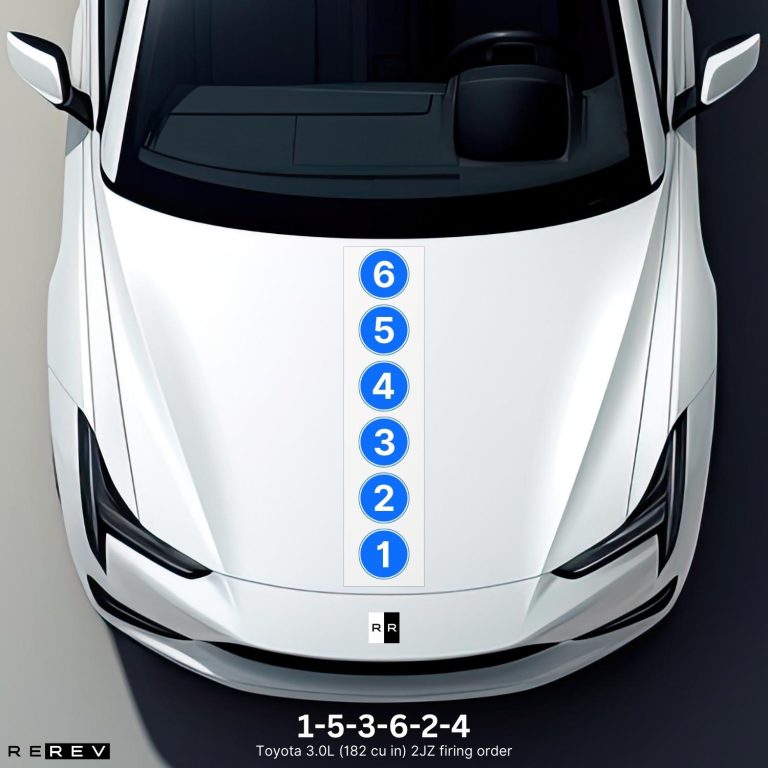Toyota 3.0L (182 cu in) 2JZ firing order — diagram & guide
Mastering the legendary 2JZ engine with the right firing order.

The 2JZ Toyota engine is so iconic that it doesn’t need any further introduction since it appeared in the iconic Supra model. However, the engine also had a naturally aspirated form and besides a few minor issues, it was mostly reliable.
So, we wanted to help you clear out those minor problems and misfires with a guide on Toyota 3.0L (182 cu in) firing order if you face such issues. We’ll also tell you in which order to check the cylinders and elaborate on the cylinder configuration of this engine in the upcoming sections.
Toyota 3.0L 2JZ firing order
To give you a straight-up answer, the Toyota 3.0L 2JZ firing order is 1-5-3-6-2-4, so it’s a bit specific firing pattern suitable for this engine. The six-cylinder engine has a fairly specific layout and firing order which is why drivers often get confused by the firing pattern.
Another reason why you may have been uncertain of this is that the 2JZ engine had two main forms – the 2JZ-GTE and the 2JZ-GE.
In essence, both these engines were built on the same engine block and the cylinder configuration is also the same. The difference is in the two sequential turbochargers featured in the GTE version that went into the Supra, while the GE version came later on as a naturally aspirated form of the engine.
Still, the 1-5-3-6-2-4 firing order has remained for the duration of the engine’s production cycle since the turbos didn’t make much difference in that sense.
Toyota 3.0L 2JZ cylinder diagram

Using the firing order to check the engine’s cylinders is a good way of catering to the engine’s minor issues like misfires or replacing the spark plugs. The key point here is that the engine is a straight-six motor which means that cylinders spread in a straight configuration instead of the “V” pattern in a V6.
In other words, the cylinders range from cylinder number one to the sixth cylinder in a straight line, so it’s easy to do the cylinder numbering. Also, it’s important to note that this engine has a unique straight-six configuration since the first cylinder is located at the “bottom” of the hood near the radiator.
From the first one, the following cylinders are arranged towards the rear end of the engine, in other words, toward the windshield.
Toyota 3.0L 2JZ vehicle applications
To wrap things up, we’ll go through all the vehicles that are powered by the 2JZ Toyota engine including the naturally aspirated one. This will help you figure out if your vehicle uses this firing pattern, so here’s a full list:
- Toyota Supra
- Toyota Aristo
- Toyota Crown
- Toyota Mark II
- Toyota Origin
- Toyota Progres
The naturally aspirated version of the engine was also used in the Lexus IS300 and the Lexus GS300 along with Toyota models.
Our take
With our list of the Toyota and Lexus models that use the 2JZ engine, we conclude our guide on the firing order of this now legendary powertrain. Whether it’s a turbocharged or a naturally aspirated version of the engine, it’s good to know that the firing order is always the same so you can apply it when working on the engine.
Finally, we have to advise you to check the engine’s compression over time since the 2JZ-GTE engine has an increased compression ratio and the turbochargers need to be properly maintained as well.